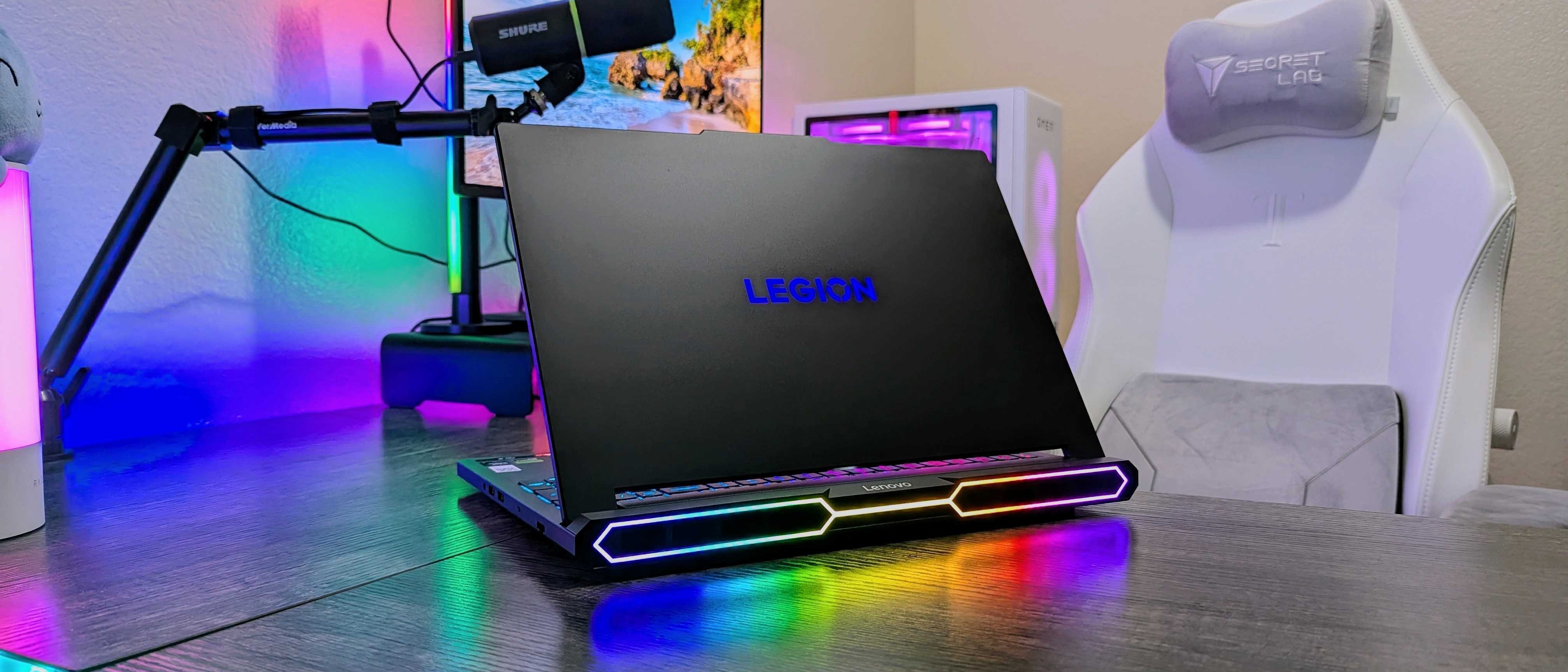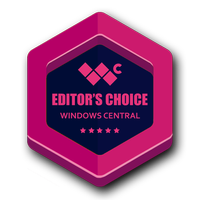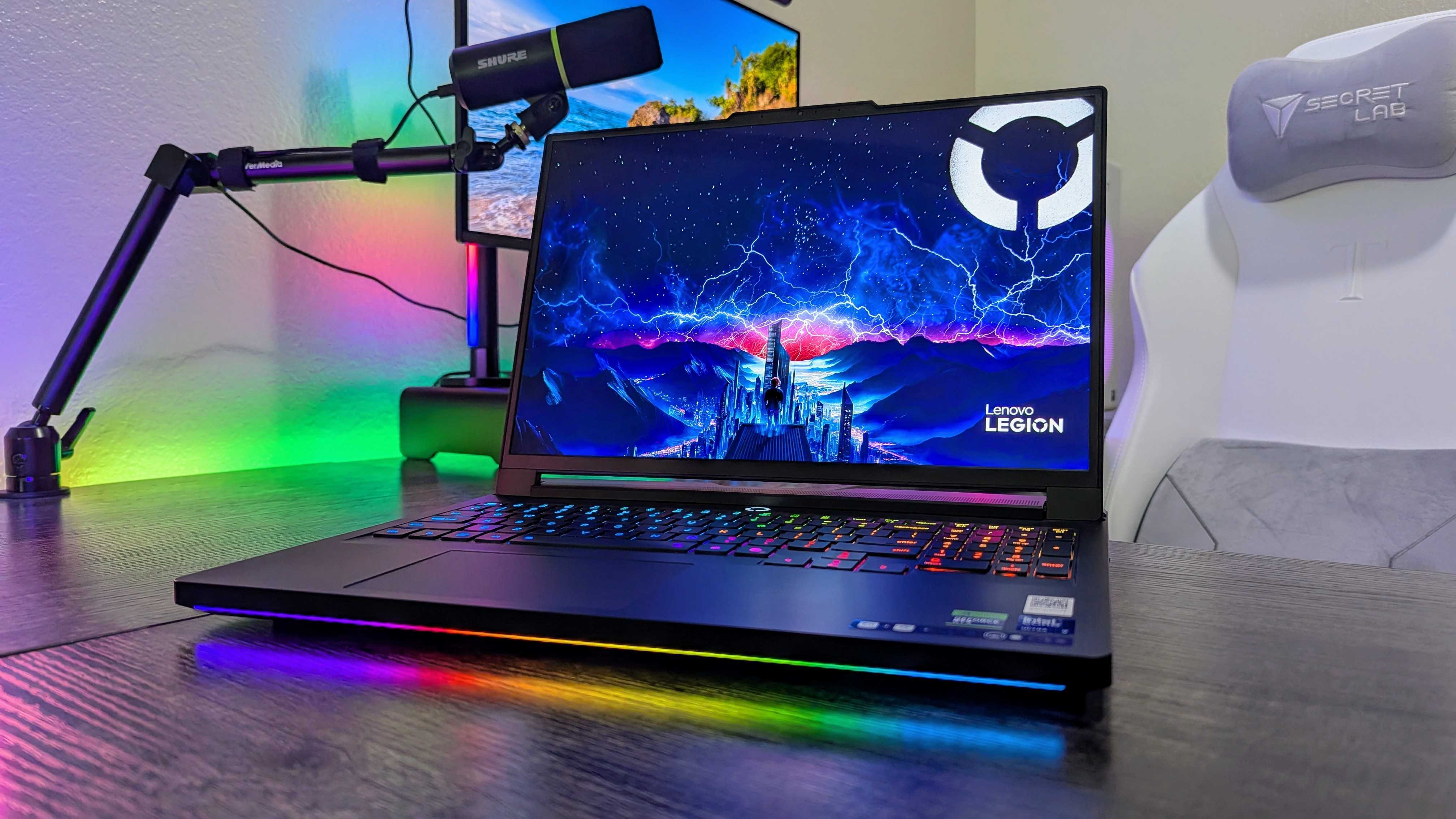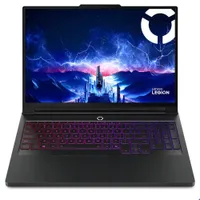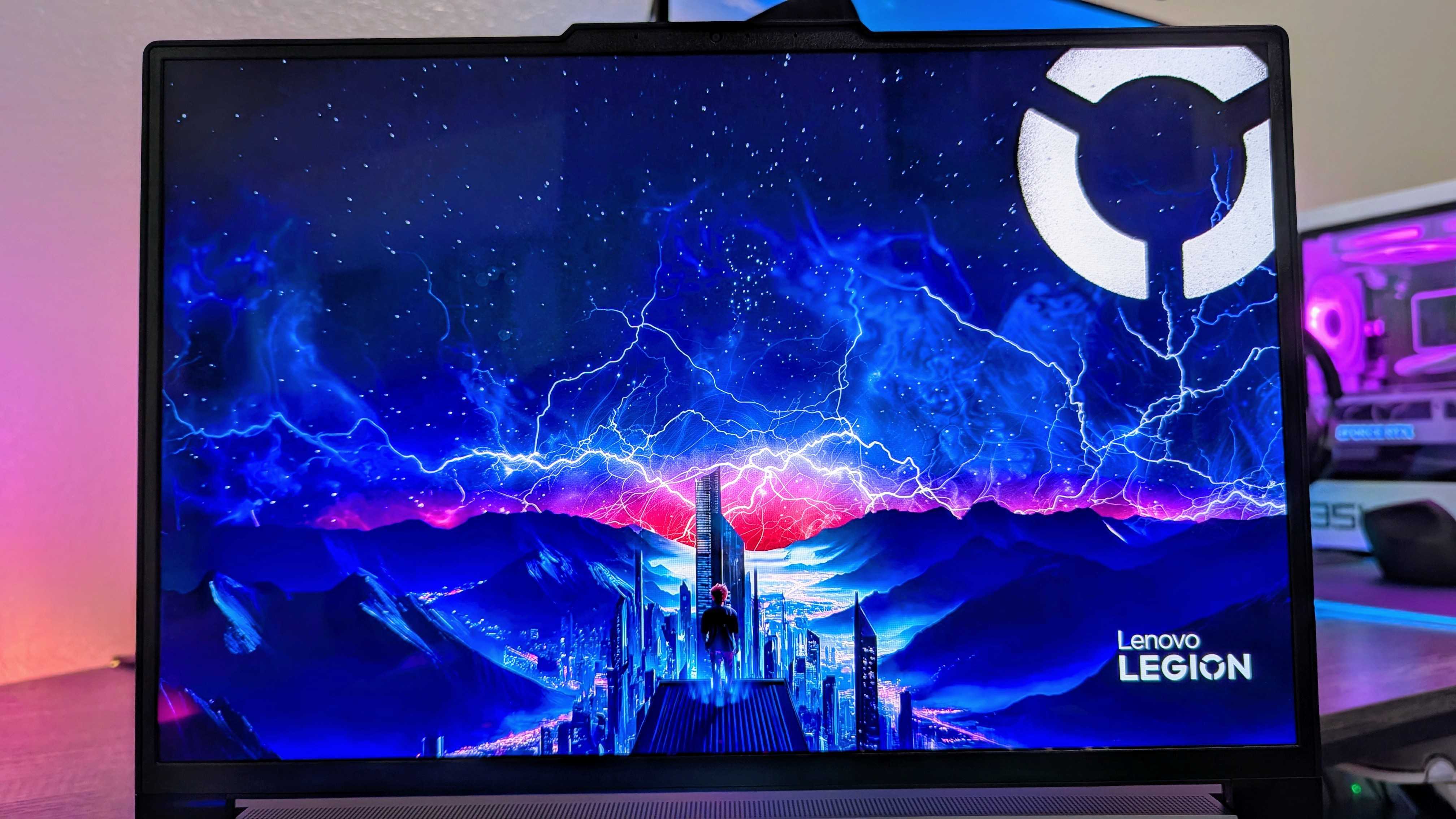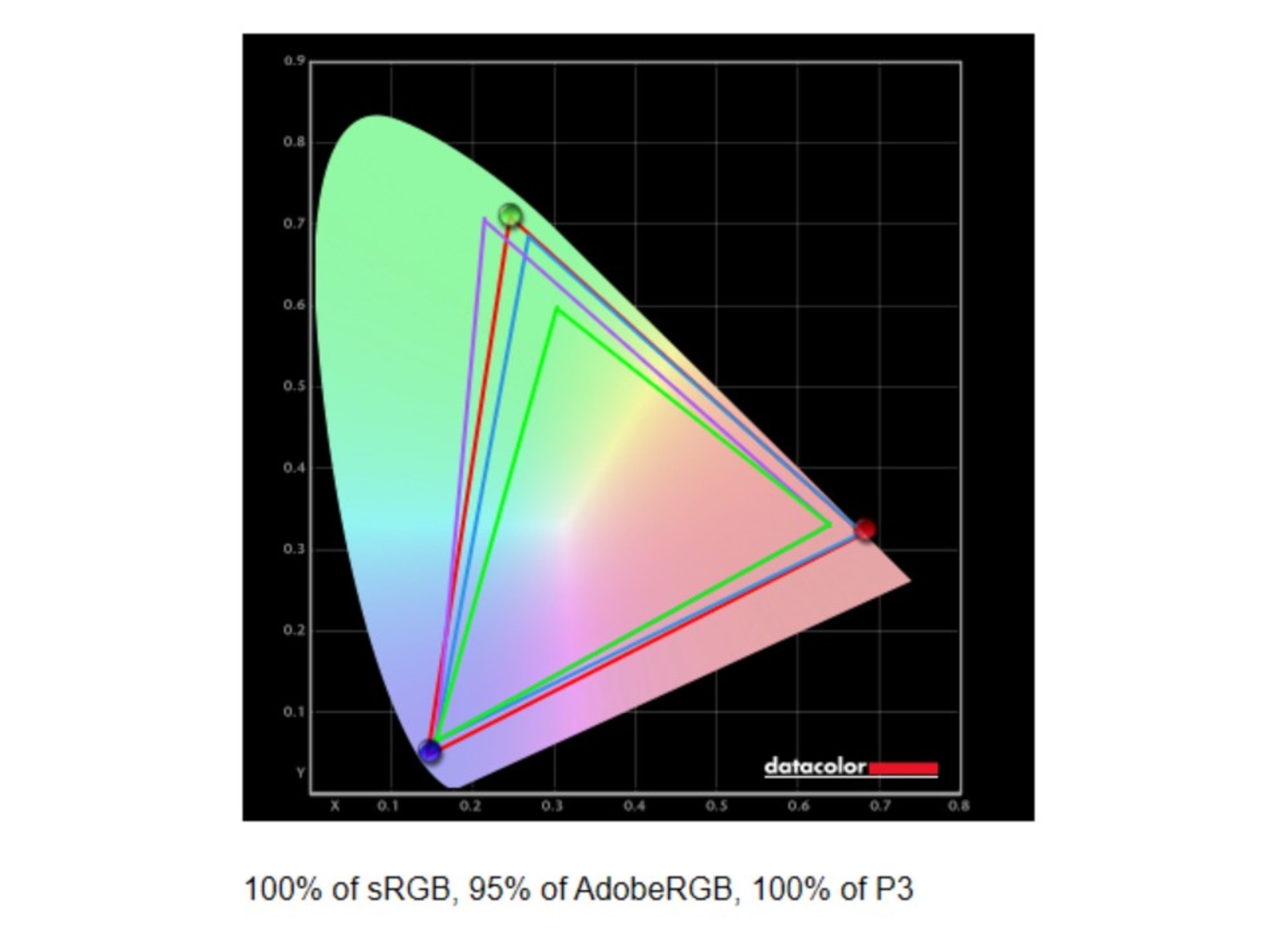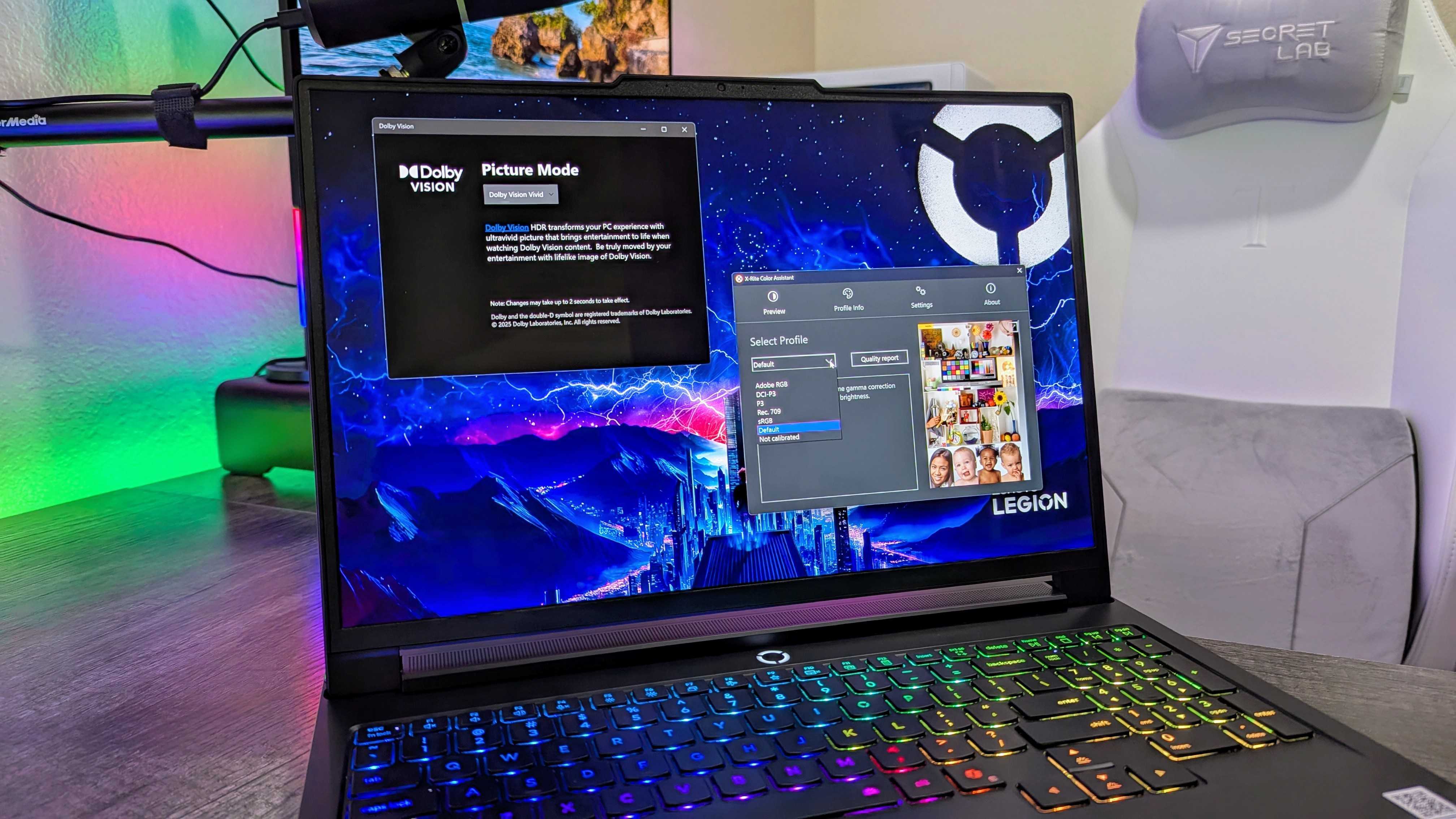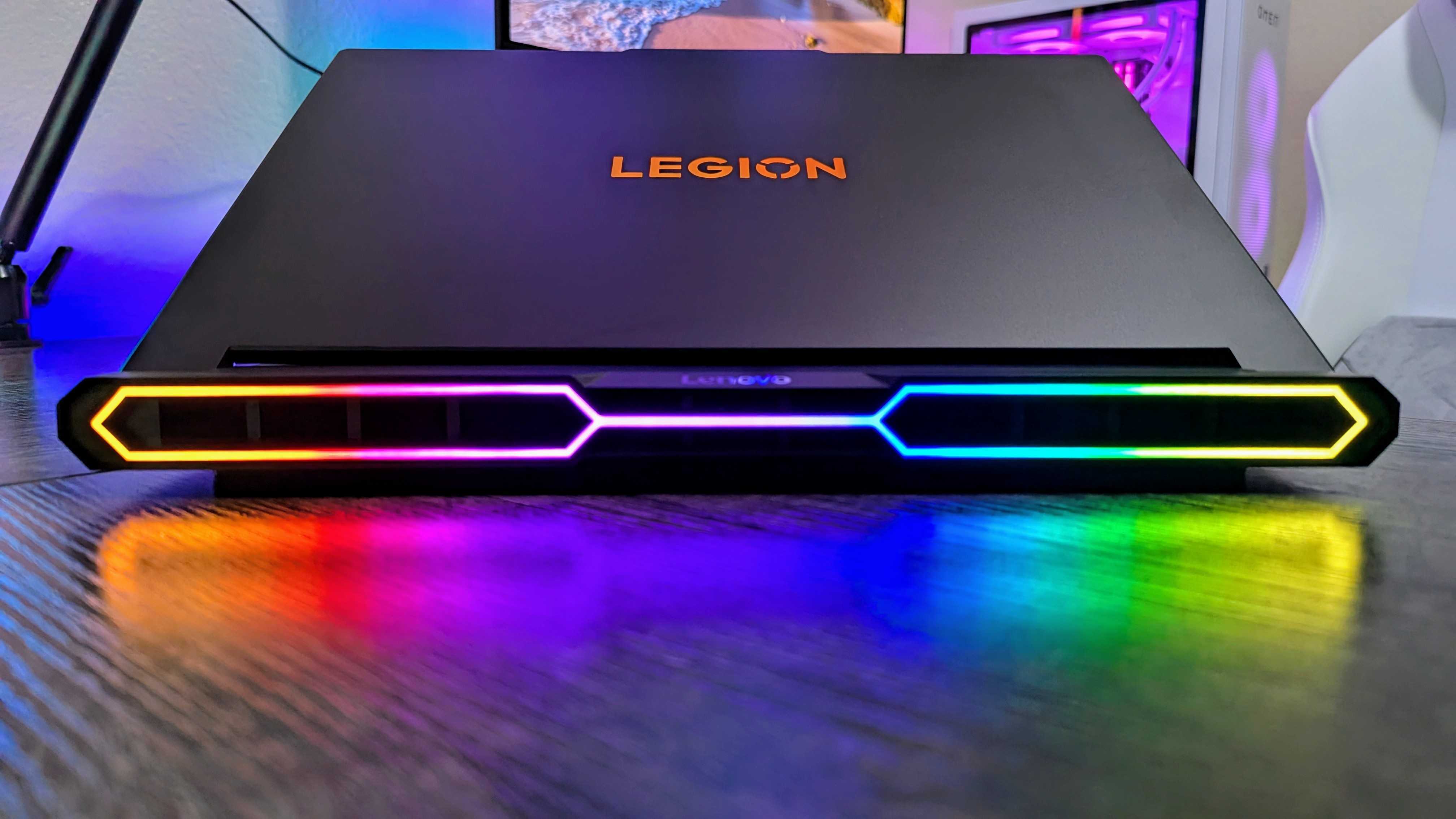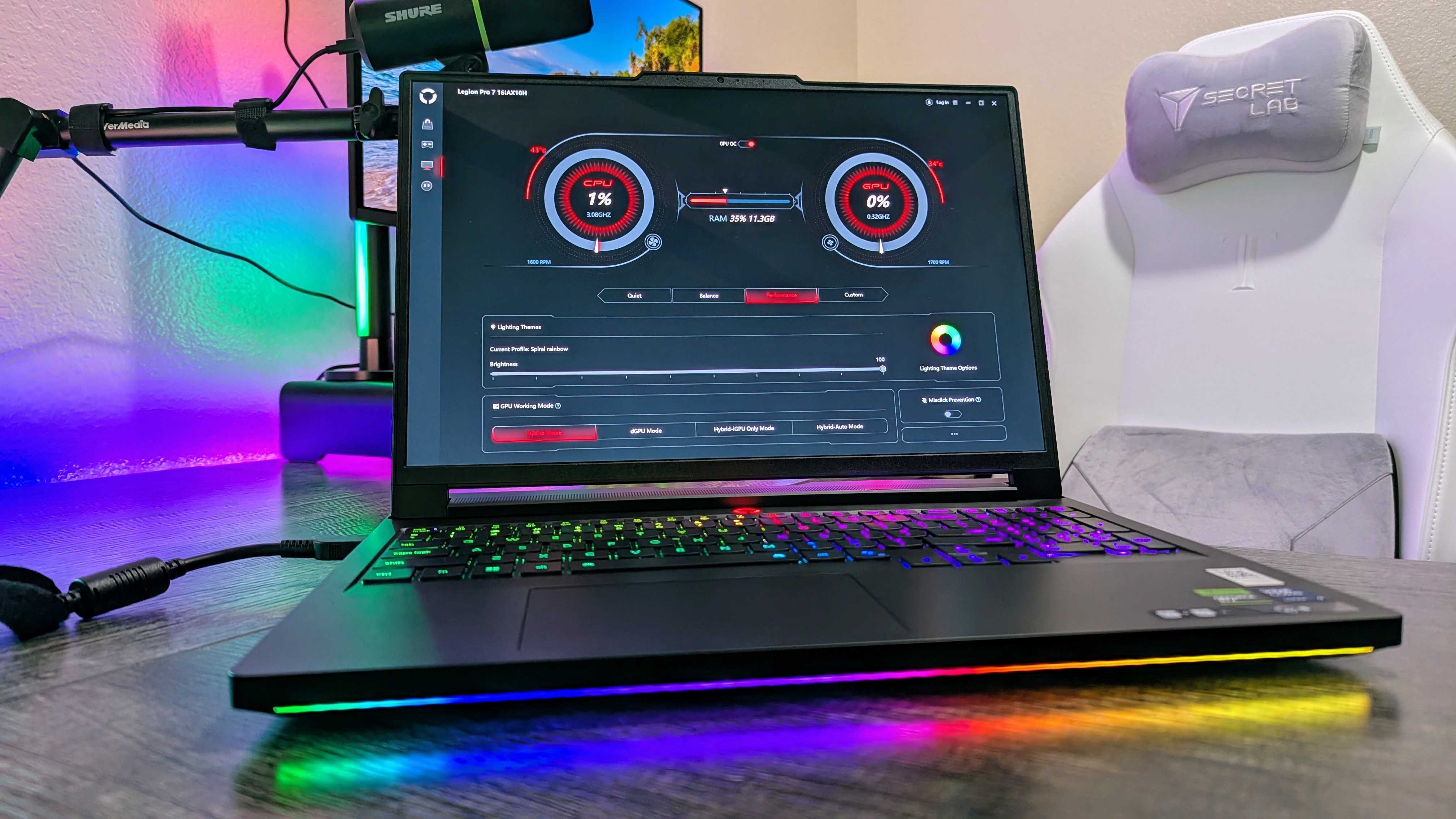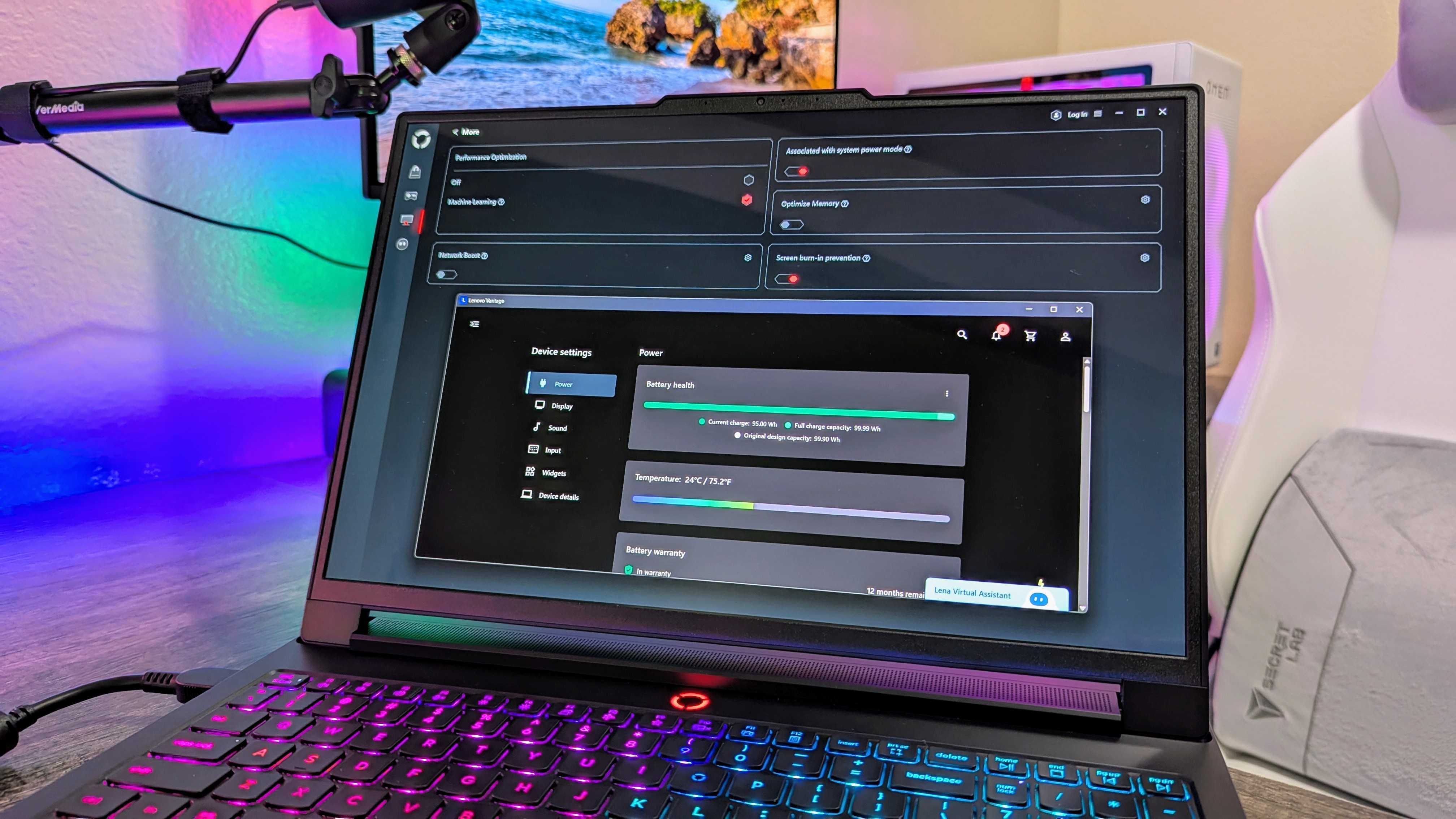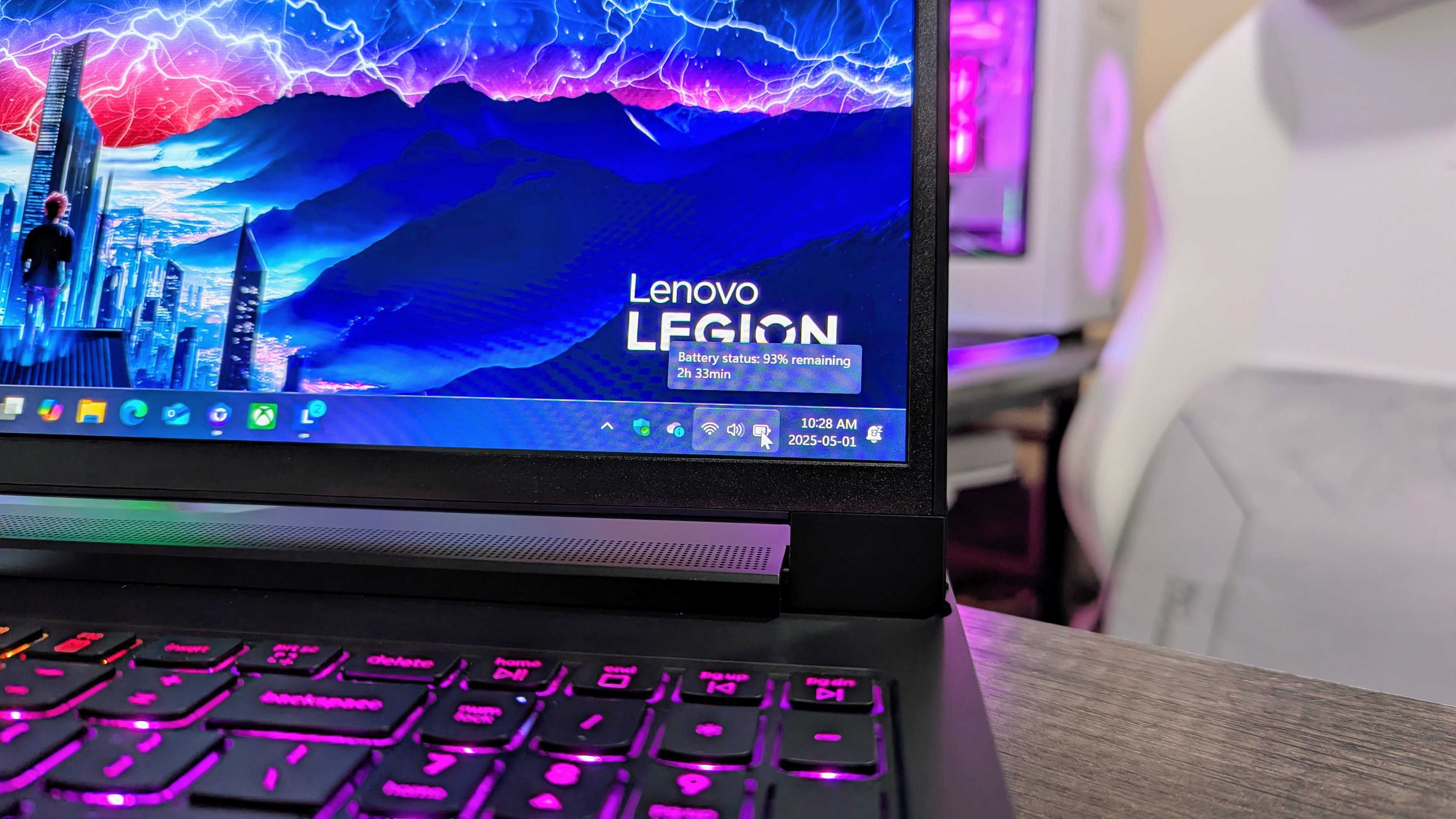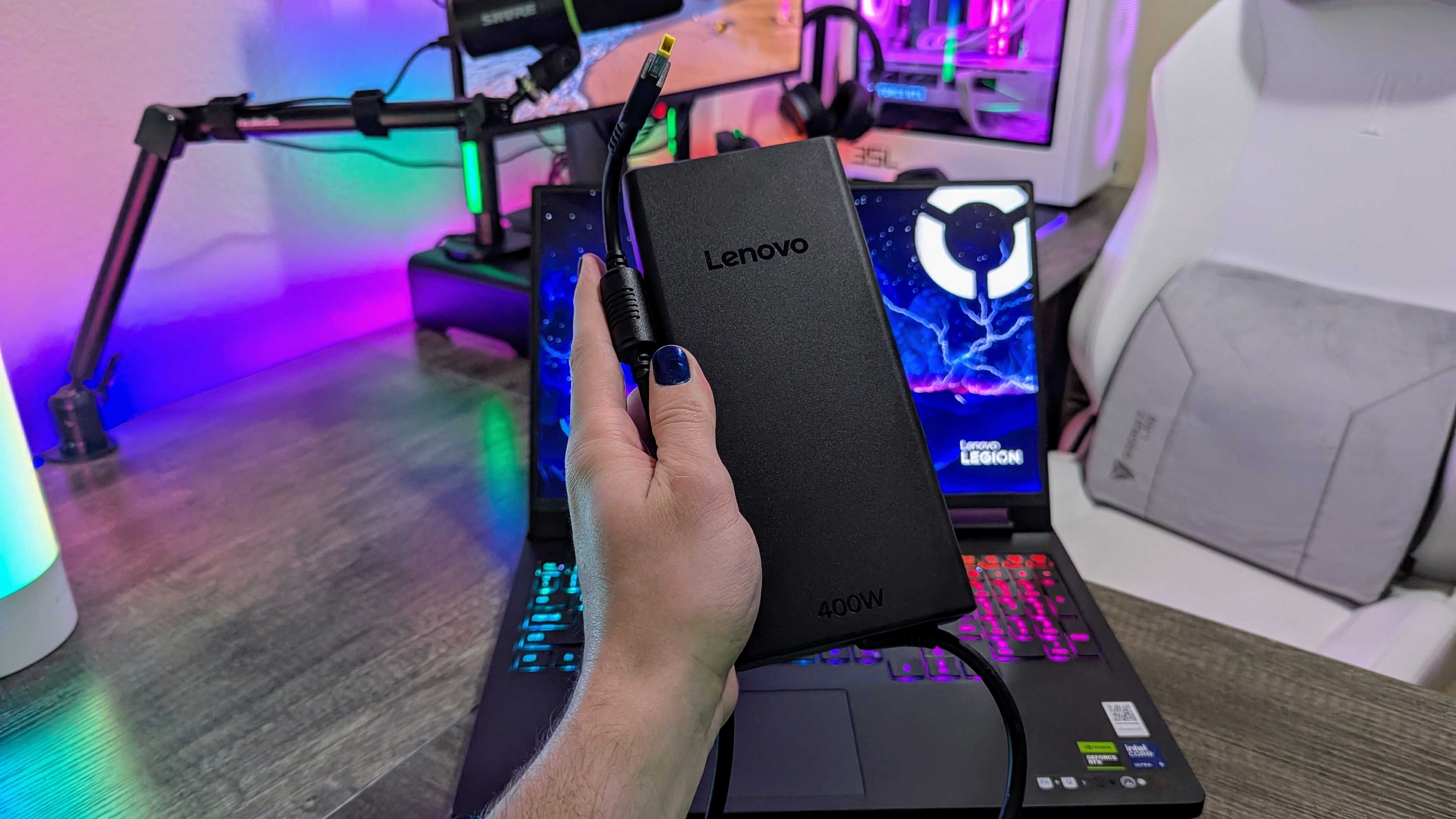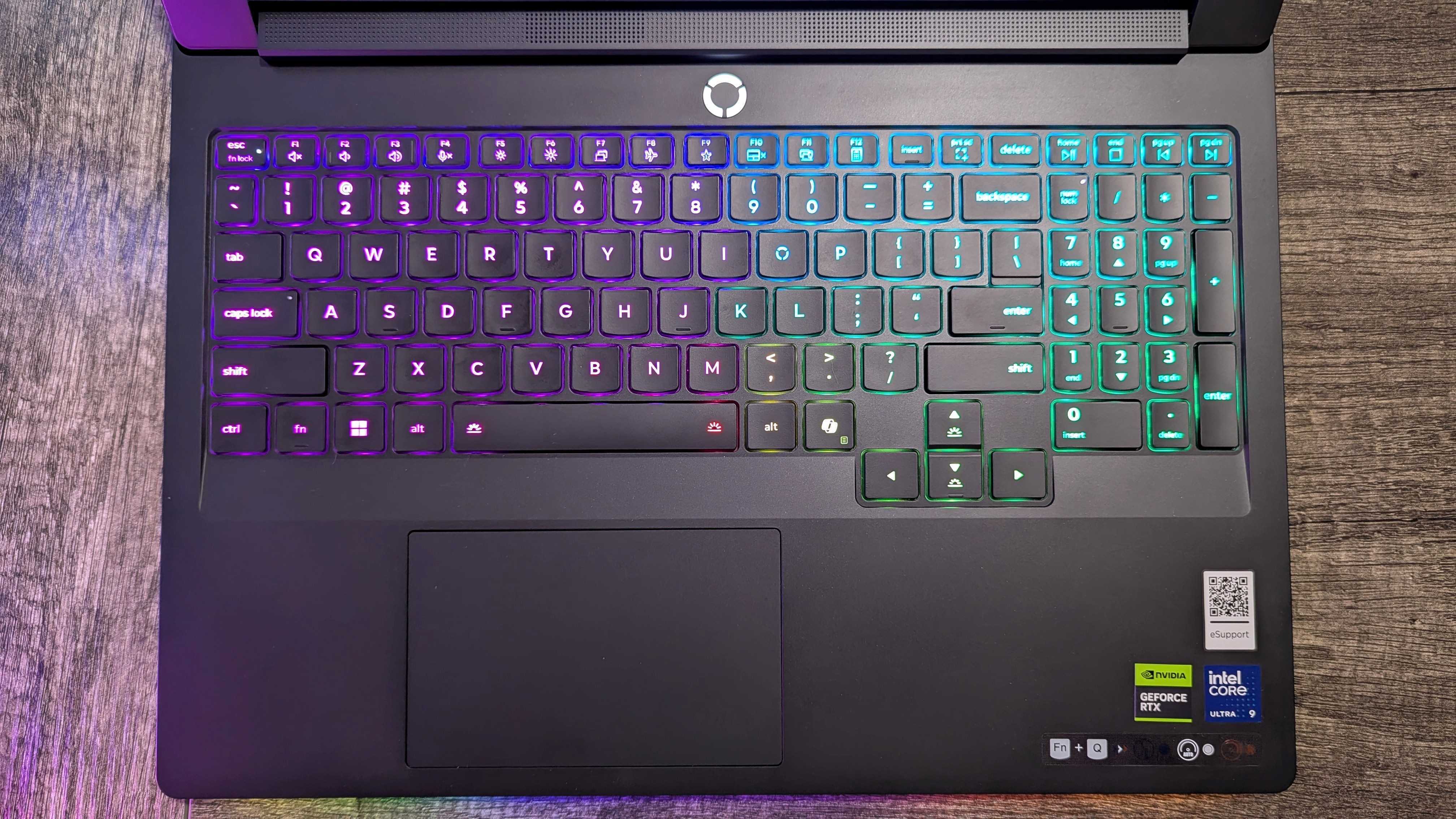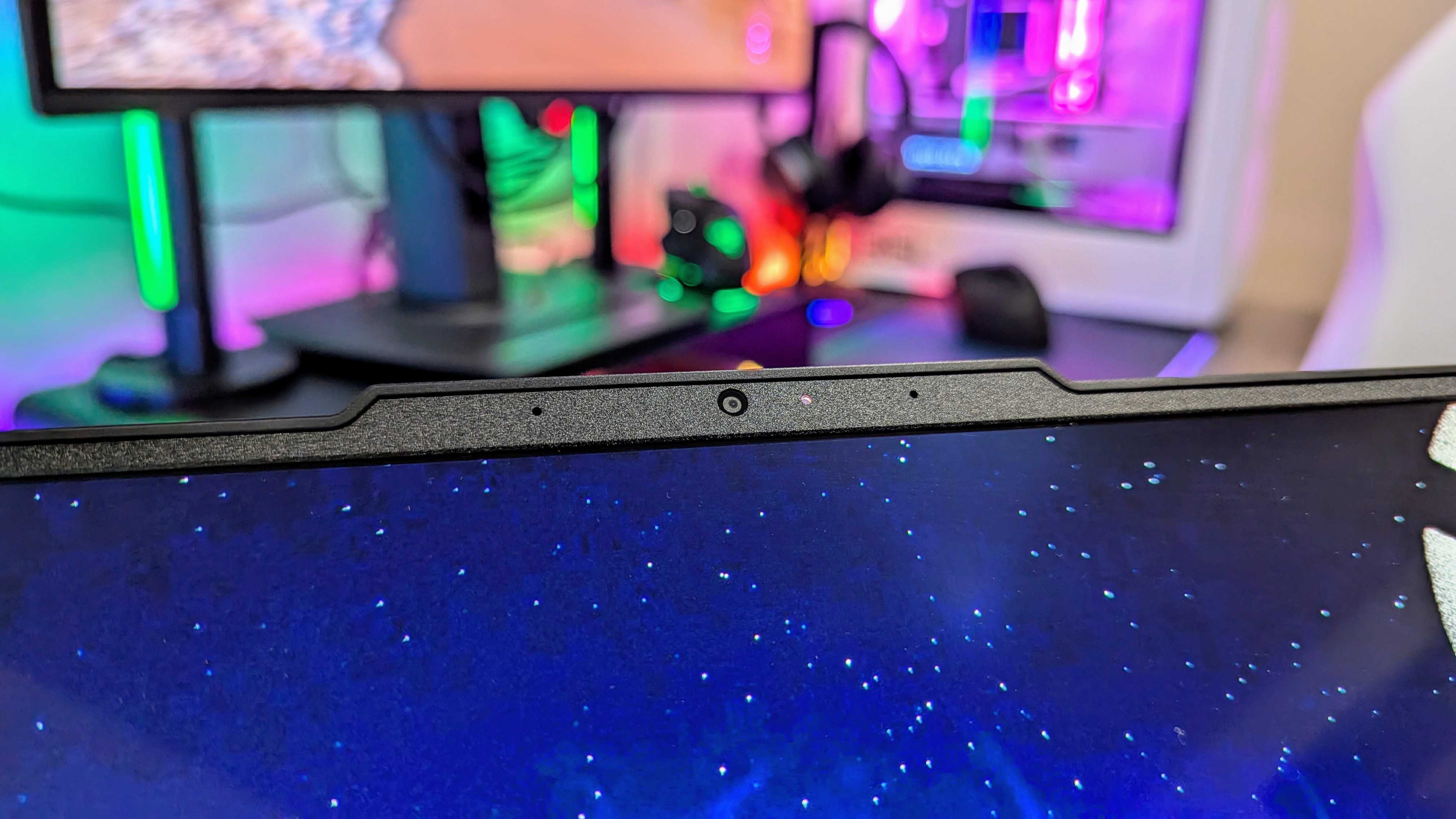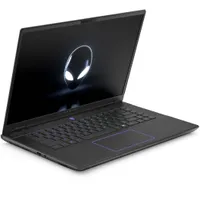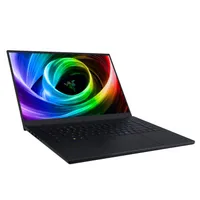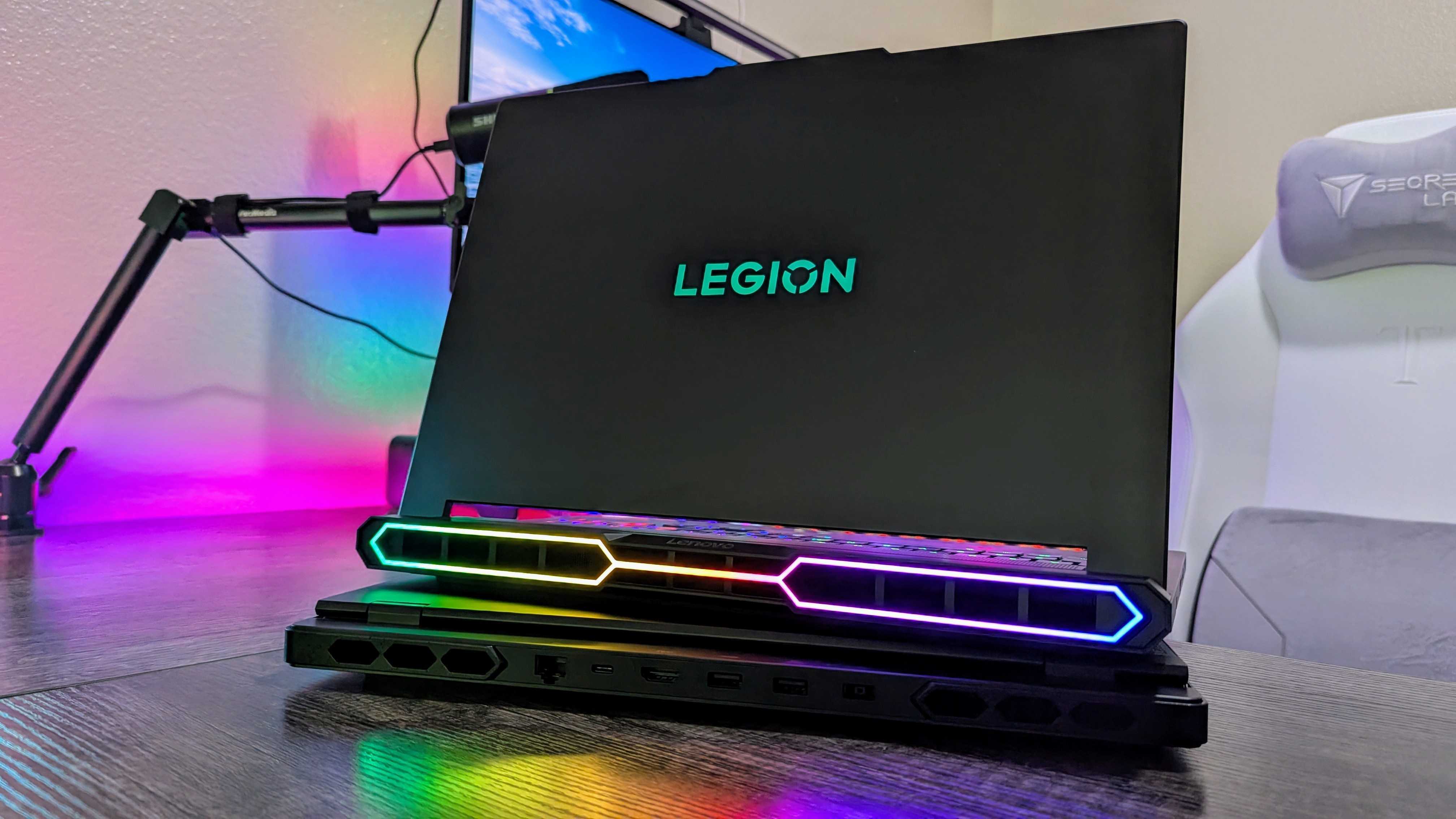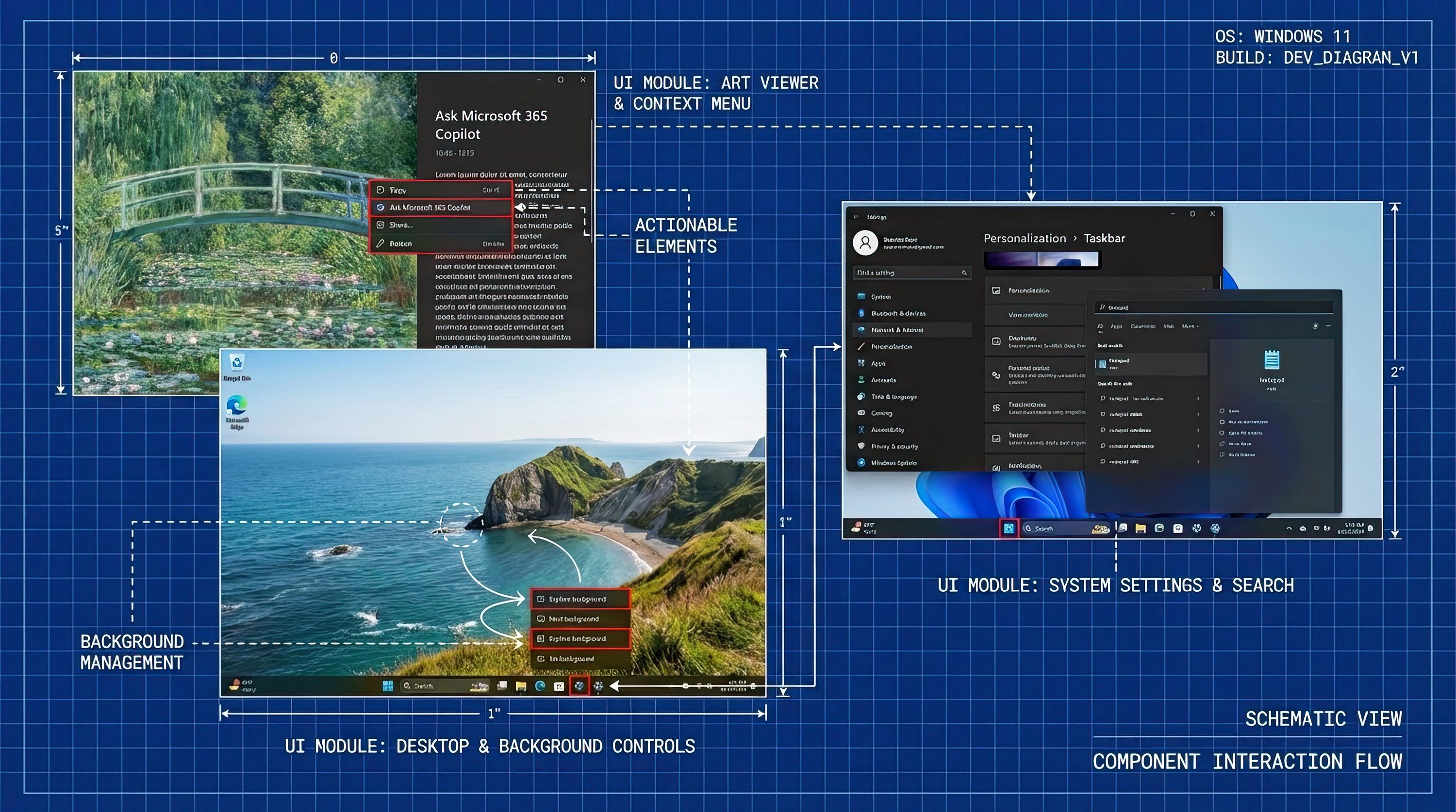Windows Central Verdict
The Lenovo Legion Pro 7i no longer feels like the "flagship killer" deal it was in years prior, but the latest model ushers in a new generation of Intel and NVIDIA hardware with a great redesign, a wonderful OLED display, and some of the best performance you'll find on any mobile machine. This is one of the best gaming laptops we're going to see this year. It is a shame we lost the rear-facing ports, though.
Pros
- +
Impressive redesigned chassis built like a tank
- +
Bright, accurate, and smooth new OLED display
- +
Best-in-class performance with reliable cooling
- +
Comfortable and responsive keyboard
Cons
- -
No more rear ports, and we lost a USB port
- -
Still no Windows Hello support
Why you can trust Windows Central
Year over year, one of the top recommended gaming laptops is the Lenovo Legion Pro 7i.
With Intel and NVIDIA both launching new generations of hardware at the same time, Lenovo took this opportunity to redesign its flagship gaming laptop and make some big improvements.
The result is once again one of the easiest recommendations for anyone seeking the most powerful 16-inch laptop they can get their hands on, but not every change Lenovo made is a positive in my book.
A wonderful new display, more power than ever, and a more premium chassis is somewhat offset by a higher starting price and the loss of rear-mounted ports, which I personally loved about previous Lenovo Legion laptops.
Even so, Lenovo has a really impressive device on its hands. This is one of the best gaming laptops of 2025.

I've reviewed a lot of gaming laptops from a lot of different companies, including the last two generations of Lenovo Legion Pro 7i. With this new generation bringing some major changes, it makes sense that I'd be the one to evaluate Lenovo's latest flagship.
This review was made possible thanks to a review sample provided by Lenovo. Lenovo had no input nor saw the contents of this review prior to publication.
Legion Pro 7i review: Cheat sheet
- What is it? A flagship, 16-inch gaming laptop powered by Intel and NVIDIA hardware.
- Who is it for? Hardcore gamers who are willing to spend more to get the most powerful portable gaming PC they can.
- How much does it cost? The Lenovo Legion Pro 7i (Gen 10) starts from $2,909.99 at Lenovo.
- What did I like? The rock-solid build quality, incredible OLED display, and top-notch performance.
- What did I not like? The loss of rear-mounted ports, the rising price, and the lack of any biometric authentication option.
Legion Pro 7i review: Pricing and specifications
The Lenovo Legion Pro 7i has always been a premium gaming laptop, but the price has risen over the last few generations.
Now, the Lenovo Legion Pro 7i (Gen 10) starts from $2,909.99 at Lenovo, which includes that 16-inch OLED display, Intel Core Ultra 9 275HX processor, NVIDIA GeForce RTX 5070 Ti GPU, 32GB of RAM, and 1TB of SSD storage.
All the latest news, reviews, and guides for Windows and Xbox diehards.
The model I reviewed runs for $3,599.99 at Lenovo, which upgrades you to an RTX 5080 GPU and 2TB of SSD storage.
Spec | Lenovo Legion Pro 7i (Gen 10) |
|---|---|
Display | 16-inch OLED, 16:10 aspect ratio, QHD+ (2,560 x 1,600) resolution, 240Hz refresh rate, 0.5ms response time, 500nits max brightness, 100% DCI-P3 color gamut, VESA DisplayHDR True Black 1000 & Dolby Vision HDR support, NVIDIA G-SYNC & Advanced Optimus support, X-Rite Certified, TÜV Rheinland Low Blue Light & High Gaming Performance certified |
CPU | Intel Core Ultra 9 275HX (24 cores, 24 threads, up to 5.4GHz Turbo Boost) |
GPU | Up to NVIDIA GeForce RTX 5090 (24GB GDDR7 VRAM, 256-bit, up to 175W TDP) |
NPU | Intel AI Boost (Up to 13 TOPS), Lenovo AI Engine+ (LA1 & LA3) |
Memory | Up to 64GB DDR5 @ 6,400MHz (2x CSODIMM slots) |
Storage | Up to 1TB NVMe PCIe Gen5 Performance SSD, up to 2TB NVMe PCIe Gen4 SSD (2x M.2 2280 slots) |
Ports | 1x Thunderbolt 4 (40GBps, DisplayPort 2.1), USB Type-C 3.2 Gen 2 (10GBps, DisplayPort 2.1, 140W Power Delivery 3.0), 1x USB Type-A 3.2 Gen 2 (10GBps, 10W always-on), 2x USB Type-A 3.2 Gen 1 (5GBps), 1x HDMI 2.1, 1x RJ45 Ethernet, 1x 3.5mm audio jack |
Connectivity | Wi-Fi 7 2x2, Bluetooth 5.4 |
Battery | 99.9Whr, 400W DC charger |
Dimensions | 364 x 275.9 x 21.9-26.6mm (14.33 x 10.86 x 0.86-1.04in) |
Weight | ~2.72kg (~6lbs) |
Warranty | 1-year standard, Lenovo Legion Ultimate Support |
In the box, you'll find your Lenovo Legion Pro 7i (Gen 10) gaming laptop and a 400W, proprietary DC charger.
Lenovo Legion Pro 7i (Gen 10) — Core Ultra 9 275HX | RTX 5080 | 32GB RAM | 2TB SSD
Buy now: $3,559.99 at Lenovo
The configuration that Lenovo sent me to review sits right in the middle, and it's a fantastic high-end gaming machine. You'll have to configure your own Legion Pro 7i, though, and you really can't go wrong — but don't bother upgrading to the RTX 5090, it's not worth it.
👉See at: Lenovo.com
Legion Pro 7i review: Design and build quality
In my initial hands-on experience with the Lenovo Legion Pro 7i (Gen 10), I spent some time comparing it to the previous generation. This is a redesign, after all, so there are a few notable differences.
The quick rundown? We still got an aluminum chassis with a dark matte coating, but Lenovo made the Legion Pro 7i slightly thicker, slightly larger, and slightly lighter than the Lenovo Legion Pro 7i (Gen 9) I reviewed.
Now, the Legion Pro 7i's lid is flush with the larger rear when closed. There's a reason for this, as Lenovo redesigned this laptop's thermal shelf and installed some massive vents on the rear to allow for greater airflow.
This did mean relocating the ports (more on that soon), but Lenovo also outlined those vents in RGB lighting and gave the "Legion" logo on the lid the same treatment, so you now have a lot more lights to play with.
The new Legion Pro 7i is also built like a tank. Build quality is excellent, and Lenovo somehow manages to make this massive and heavy machine feel premium. In terms of look and feel, this is my favorite Lenovo Legion laptop so far.
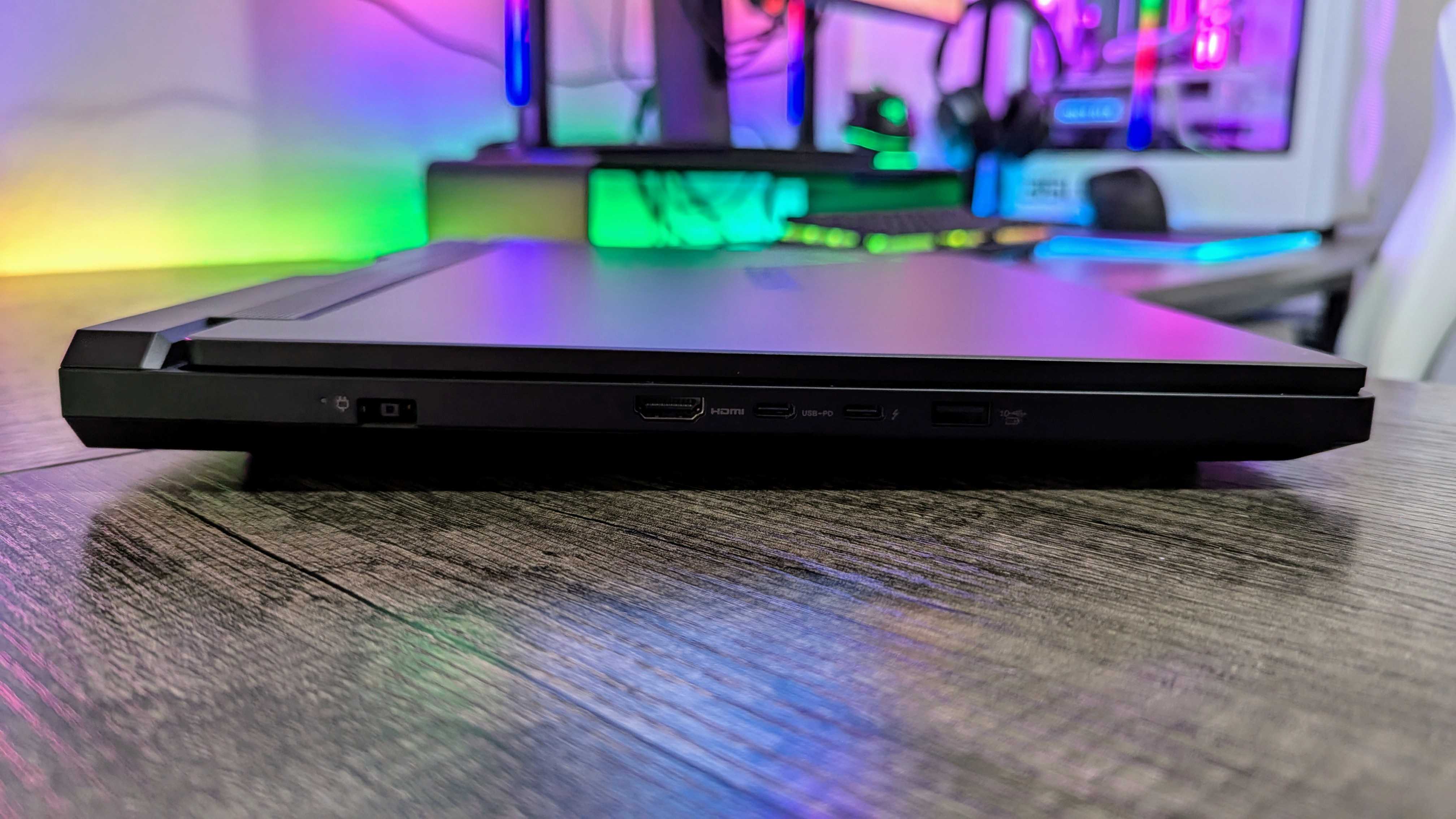
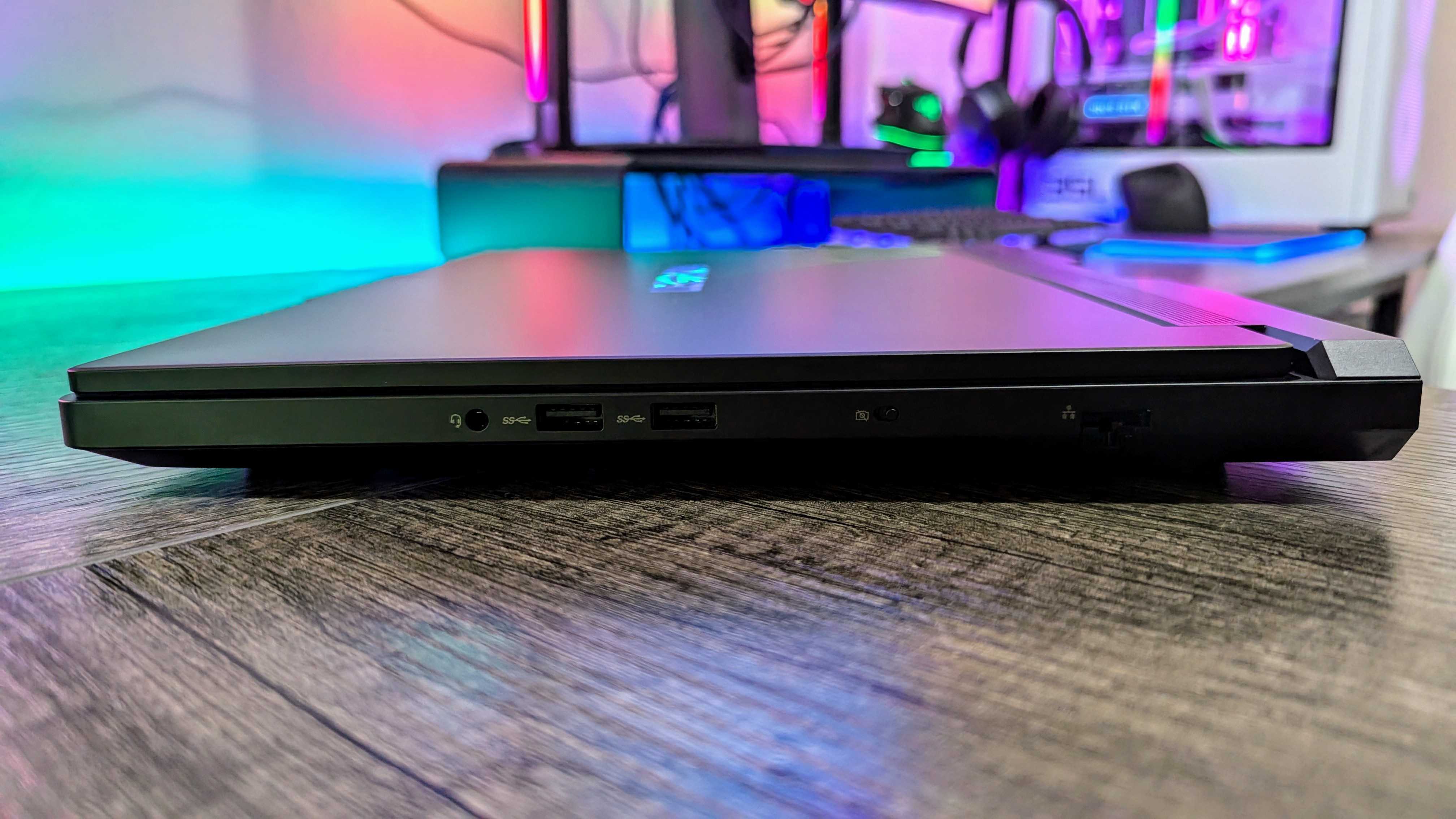
That new thermal system does mean accepting an unfortunate compromise, though. There's no longer room on the rear of the laptop for any ports, thanks to the enlarged vents, so they've been relocated to the sides.
I really like having power, display, ethernet, and one or two USB ports on the rear of the laptop, as that keeps those cables out of the way even with a full setup. This is especially convenient when you want to use a mouse on one side, as most users are bound to do.
It's not just that these ports are side-mounted, either. Lenovo had to position most of the ports halfway down the chassis, so they're impossible to ignore.
While I appreciate that one of the USB Type-C ports was upgraded to Thunderbolt 4, it's also unfortunate that we lost one of the USB Type-A ports year-over-year. At least Ethernet and HDMI 2.1 are still onboard, and you can still take advantage of 140W charging via one of the Type-C ports, if you're in a pinch.
Legion Pro 7i review: Display quality
Another major upgrade bestowed on the tenth-generation Legion Pro 7i is in the display department. Namely, the familiar IPS LCD panel of old has been replaced with a shiny new OLED display, and it's gorgeous.
It's still 16 inches across diagonally, it's still a taller 16:10 aspect ratio, it's still comfortably balanced and sharp with a QHD+ resolution, and it's still ultra-smooth with a 240Hz refresh rate. It still lacks touch support and is surrounded by relatively thin plastic raised bezels.
That's where the similarities end. The Lenovo Legion Pro 7i (Gen 10)'s image quality is noticeably and substantially superior in all other departments, including vibrancy, color accuracy, contrast, responsiveness, and consistency.
Even as far as OLED displays go, this panel is impressive. Lenovo did an excellent job tuning this panel, and those optimizations are backed by X-Rite, TÜV Rheinland Low Blue Light, and TÜV Rheinland High Gaming Performance certifications.
Setting | Brightness | Black | Contrast | White point |
|---|---|---|---|---|
0% | 4.5 | 0 | Infinite | 6,500 (0.312, 0.327) |
25% | 30.6 | 0 | Infinite | 6,500 (0.313, 0.329) |
50% | 107.1 | 0 | Infinite | 6,500 (0.313, 0.329) |
75% | 256.8 | 0 | Infinite | 6,500 (0.313, 0.330) |
100% | 507.3 | 0 | Infinite | 6,500 (0.313, 0.332) |
Benchmarking this display returns some impressive metrics, too. The Legion Pro 7i (Gen 10) easily hits 100% of the sRGB and DCI-P3 color gamuts, and Lenovo bakes in the X-Rite Color Assistant software to help keep the display calibrated over time.
This display also gets beautifully bright with a max of over 500nits, which is a great improvement over the 300-400nits we've come to expect from other OLED displays. It also gets deliciously dark, too, so you won't have any issues with those late-night gaming sessions.
Across all brightness levels, the blacks are infinitely deep, and the white balance is practically perfect, tuned to perfection and consistent across the board. This screen looks great, plain and simple.
Performance is top-notch, too. Aside from that 240Hz refresh rate, the new Legion Pro 7i boasts a sub-1ms response time, as well as NVIDIA G-SYNC and Advanced Optimus support. Games look and feel flawless, with no sign of ghosting, screen tearing, or latency.
Support for High Dynamic Range (HDR) is also well above average. The Legion Pro 7i supports Dolby Vision, but also earns the uncommon VESA DisplayHDR True Black 1000 certification. Basically, small areas can peak at incredibly high brightnesses, which has a major impact on how punchy HDR content looks.
There's always a downside, though, and in this case, that's the use of Pulse-Width Modulation (PWM) for dimming. This display is far less extreme than many other OLED displays despite its lack of an "anti-flicker" certification or feature, at least, so only those with extreme sensitivity to PWM's characteristic flickering should be affected.
I'm also disappointed in the distinct lack of software features or customization. There's a single catch-all toggle for the Legion Pro 7i's OLED screen burn-in protection, and that's really it outside of the X-Rite app. ASUS is still the gold standard here. While I'm complaining, this display is a little glossier than I'd like.
Legion Pro 7i review: Performance and thermals
Lenovo always packs the most powerful Intel and NVIDIA hardware it can into its laptops, and this year is no exception — the Legion Pro 7i (Gen 10) is even going toe-to-toe with larger laptops that should be more powerful on paper.
Every Legion Pro 7i model will be powered by an Intel Core Ultra 9 275HX, a 24-core monster that manages to best its predecessor (the Core i9-14900HX) in most scenarios with 8 fewer threads and a lower max clock speed.
Alongside that CPU, you can equip this laptop with up to 64GB of DDR5 RAM and 2TB of SSD storage. Two CSODIMM slots and two M.2 2280 slots mean you can upgrade your memory and storage down the road, but Lenovo does let you upgrade at least the main 1TB SSD to PCIe Gen5 for the absolute best speeds (my configuration did not feature this option).
You can also go up to the full-fledged NVIDIA GeForce RTX 5090, but the RTX 5090 is a terrible value unless you very specifically need its increased VRAM or RT cores. You can see that the Legion Pro 7i easily competes with the best using just the RTX 5080, so save your money and stop there.
It's a Herculean task to make this laptop so much as stumble in general computing, as it's loaded with more than enough firepower to crush any regular workload.
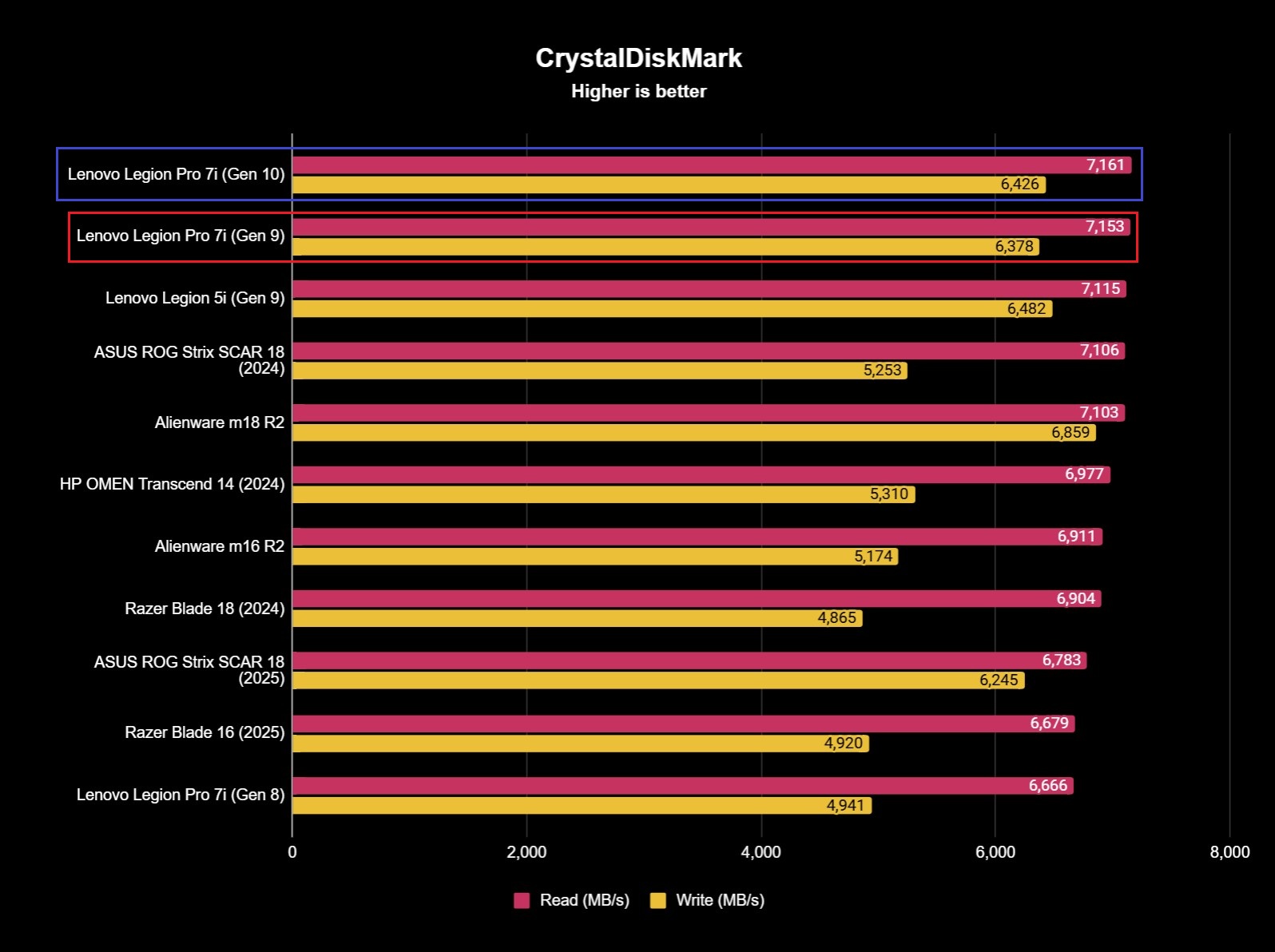

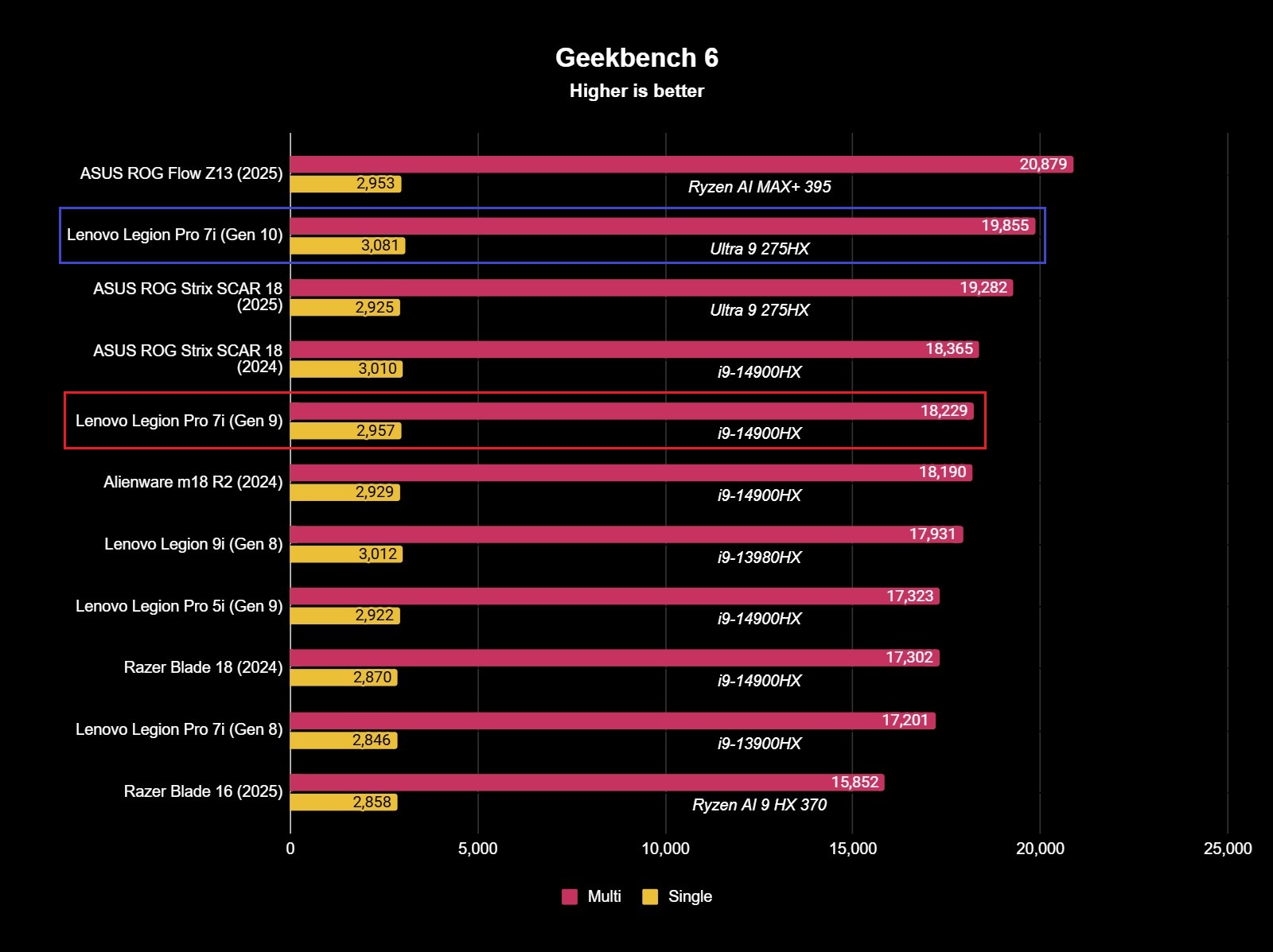
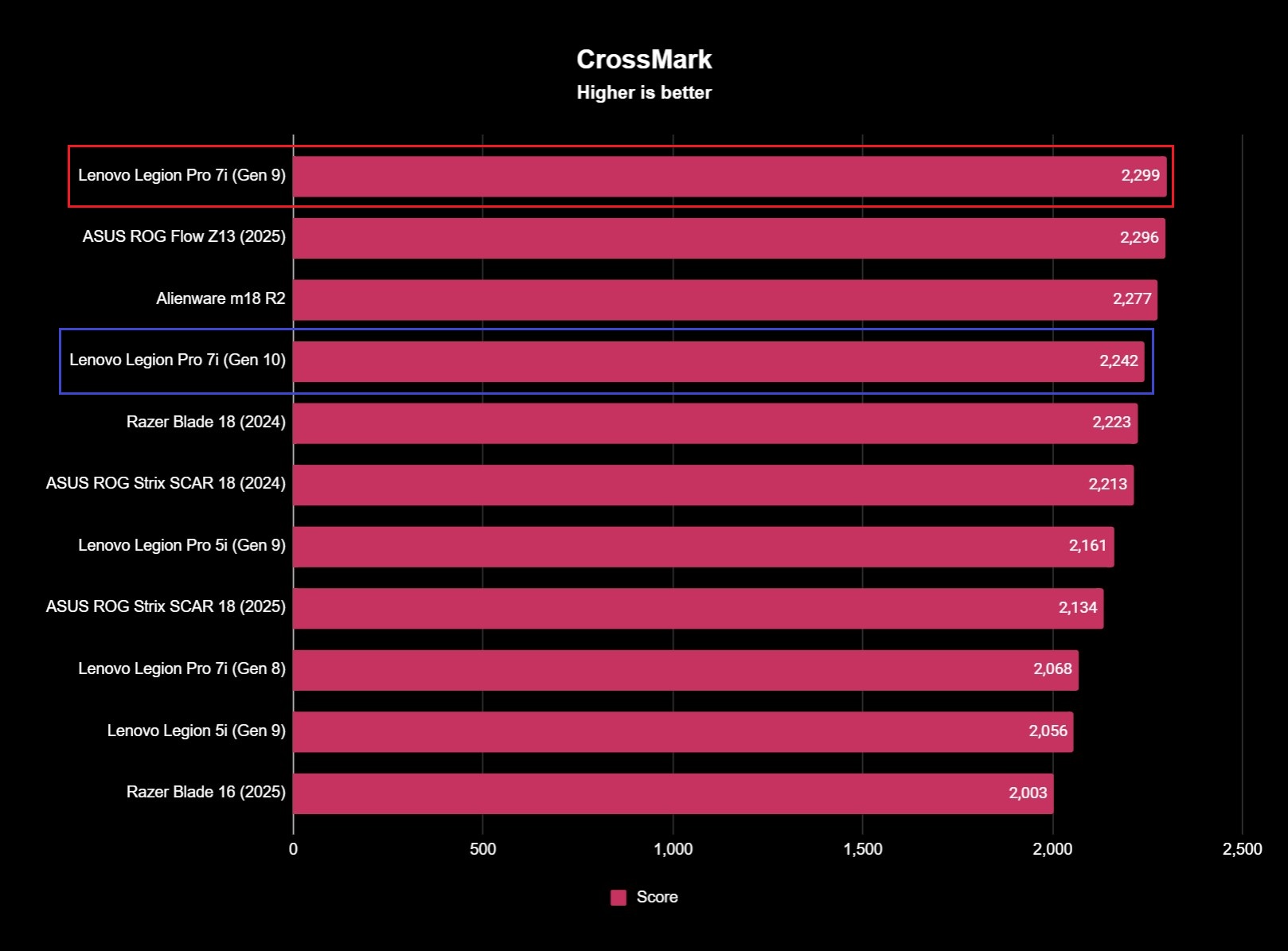
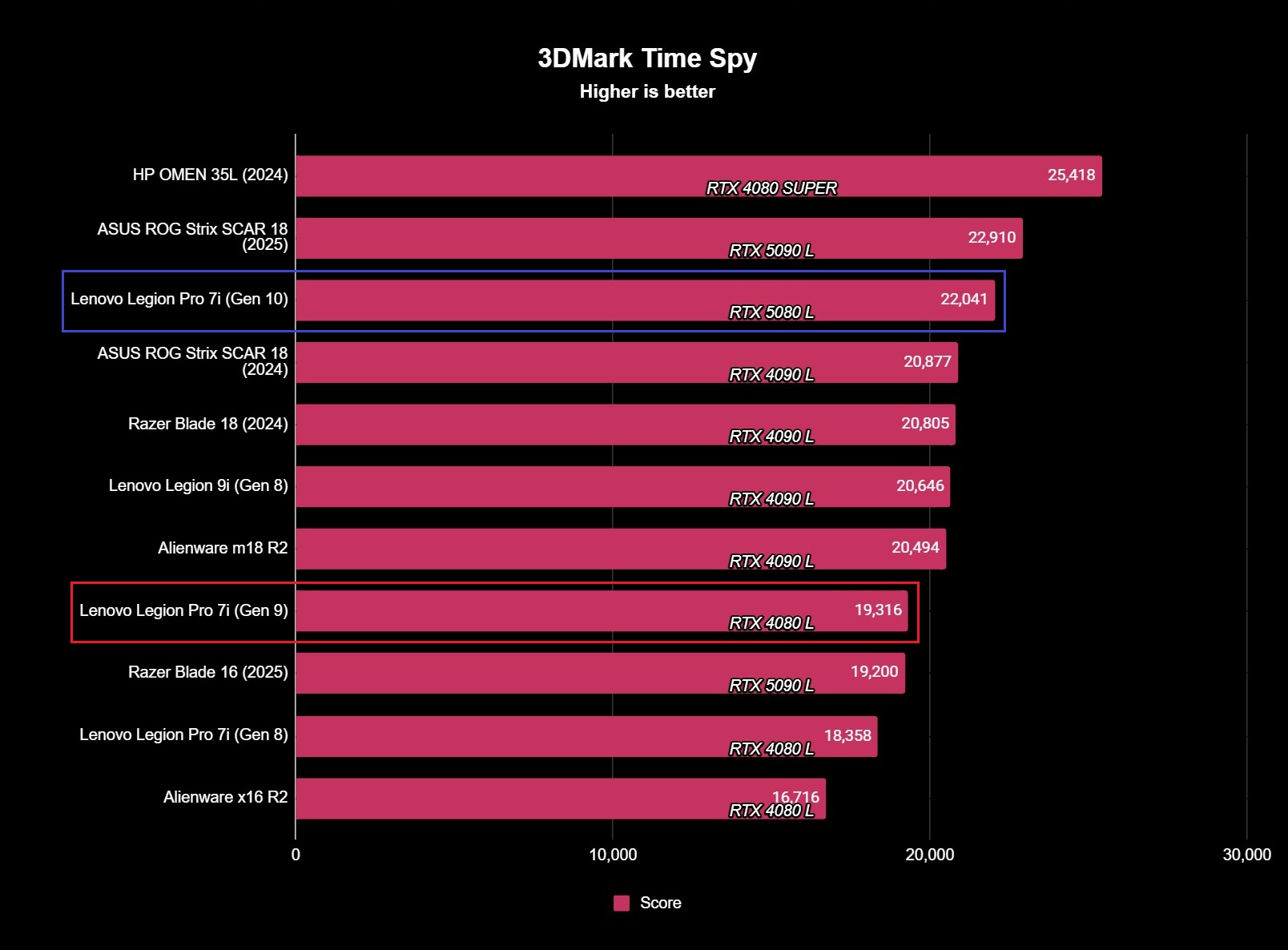
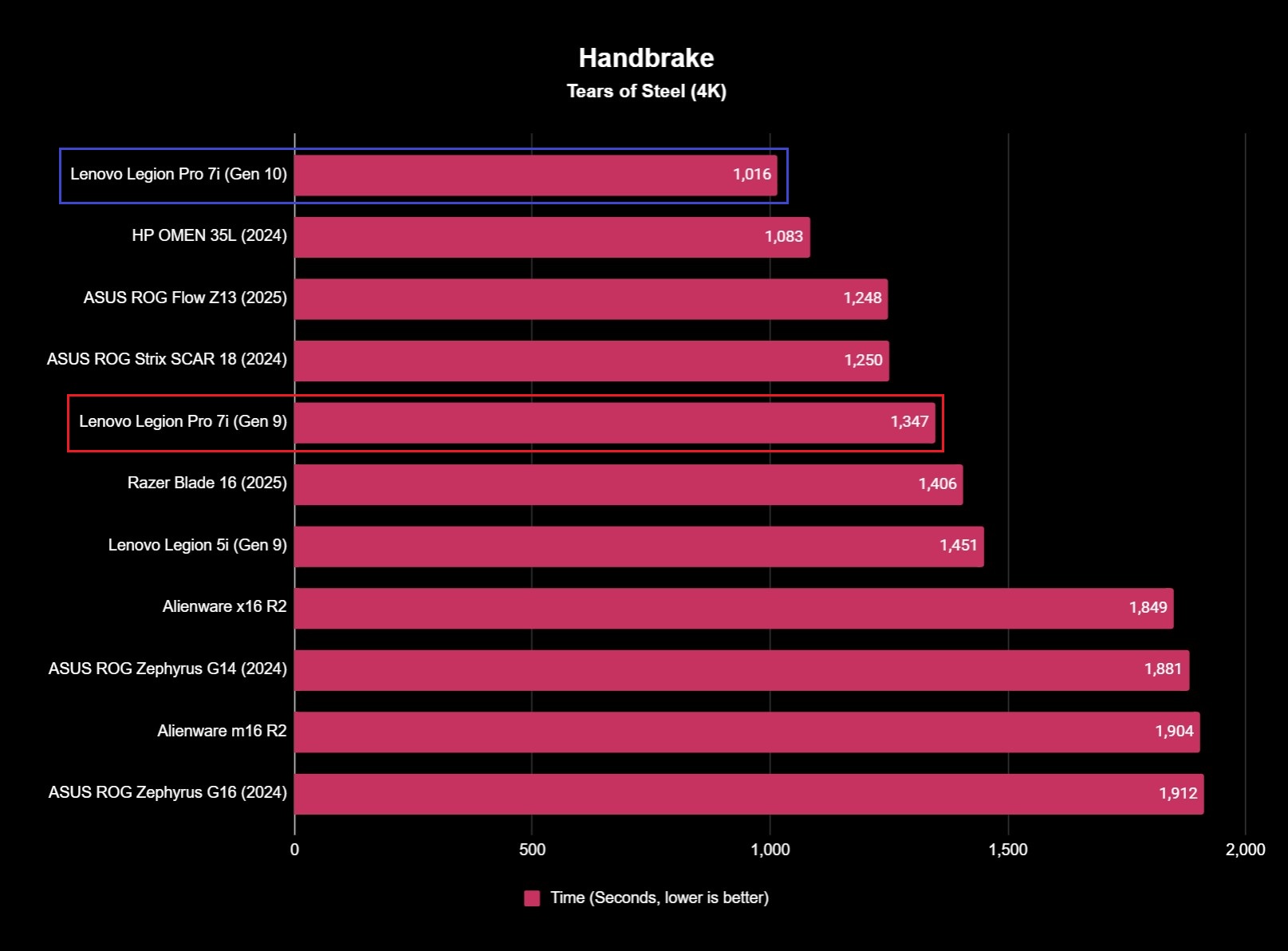
In benchmarks, the Lenovo Legion Pro 7i (Gen 10) either shatters Windows Central's records or at least comes close. It's a beast whether you're stressing the CPU or GPU, and it's a healthy upgrade over last year's laptop.
Lenovo's upgraded thermal management system is something special, too. We're also reviewing the ASUS ROG Strix SCAR 18 (2025) with the same CPU, memory, and storage as the Legion Pro 7i... and the more powerful RTX 5090 GPU.
The Legion Pro 7i bests that significantly larger and more expensive laptop more often than not, and easily keeps up everywhere else. In 3DMark's Time Spy benchmark, the Legion Pro 7i's RTX 5080 scored only 4% worse than the SCAR 18's RTX 5090.
I ran the Legion Pro 7i through that benchmark 25 times non-stop, too, and it achieved a framerate stability of 98.7%, more than earning my nod of approval. During my most intense testing or gaming, the Legion Pro 7i never felt hot to the touch, and its fans — while certainly loud — stayed consistently and comfortably low-pitched.
Here's how the Legion Pro 7i (Gen 10) handled the usual slate of games I use to benchmark:
- Forza Horizon 5 — 158 FPS (Extreme preset, 1600p resolution, 240Hz refresh rate, v-sync enabled, AMD FidelityFX Super Resolution/Intel XeSS 2/NVIDIA DLSS Super Resolution/Frame Generation/Reflex Low Latency disabled) | 233 FPS (Max settings, NVIDIA DLSS Super Resolution set to Auto, NVIDIA DLSS Frame Generation/Reflex Low Latency enabled)
- Gears 5 — 134 FPS (Ultra preset, 1600p resolution, uncapped framerate, v-sync enabled)
- Call of Duty: Black Ops 6 — 145 FPS (Extreme preset, 1600p resolution, 240Hz refresh rate, v-sync enabled, NVIDIA DLSS Super Resolution set to Performance, NVIDIA Reflex Low Latency enabled, NVIDIA DLSS Frame Generation disabled)
- Cyberpunk 2077 — 80 FPS (Ray Tracing: Ultra preset, 1600p resolution, 240Hz refresh rate, v-sync enabled, NVIDIA DLSS Super Resolution Transformer Model set to Auto, NVIDIA DLSS Reflex Low Latency enabled, NVIDIA DLSS Frame Generation disabled) | 179 FPS (Ray Tracing: Overdrive preset, NVIDIA DLSS Ray Reconstruction enabled, NVIDIA DLSS Multi-Frame Generation 4x enabled)
When gaming, the Legion Pro 7i was a stable performer, with little latency or stuttering in my testing.
The RTX 50-series can obviously better advantage of the new DLSS 4 features, like Multi-Frame Generation, but I absolutely didn't need it to see framerate improvements across the board compared to the last generation — 21% and 13% better in Forza Horizon 5 and Gears 5, respectively.
Legion Pro 7i review: Software and AI experience
Windows 11 runs like a dream on the Legion Pro 7i, and Lenovo's software additions are (mostly) useful or at least unobtrusive.
Device settings are now split between the existing Lenovo Vantage app and a new Legion Space launcher, which is fine, I suppose. The latter is at least clean and easy to navigate, but there's a notable lack of in-depth options, including for overclocking (you can toggle GPU overclocking, that's it).
I don't love the annoying, spammy Lenovo Subscription Marketplace, Lenovo Now, and McAfee Antivirus preinstalls, either, but you'll likely want to keep everything else.
Now, the Lenovo Legion Pro 7i (Gen 10) is an AI PC, but it does not qualify for Copilot+ PC status. You can blame Intel for putting an underpowered Neural Processing Unit (NPU) into its most powerful CPUs, for some reason.
Still, you get 13 TOPS of AI computational power through that NPU, as well as Lenovo's own "AI Engine+" chips. The former can be leveraged by some programs to improve performance and efficiency, and the latter enables... machine learning for performance optimization? That seems to be it, really.
The Legion Pro 7i may not be completely invited to the future of AI in Windows, but the entire suite of NVIDIA RTX 50-series GPUs specializes in hardcore artificial intelligence workloads, and they do deliver in that regard.
Legion Pro 7i review: Battery experience
Normally, this section can be summed up as "battery life is terrible, but did you expect anything else from a Lenovo Legion laptop?"
Battery life is still terrible, but I've been pleasantly surprised by the latest generation Legion Pro 7i. Its 99.9Whr battery seems to be benefiting from the more efficient Intel and NVIDIA hardware, and possibly whatever optimizations Lenovo managed to make under the hood.
Looping an hour of a generic Microsoft Office workload and then an HD video with the default Balanced performance profile, 200nits display brightness at 240Hz, RGB lighting, and 50% speaker volume resulted in losses of 32% and 35% battery, respectively.
Again, though, that was with default settings. I didn't completely disable the RGB lighting, throttle the display refresh rate to 60Hz, or jump down to the lowest possible performance settings.
Running a Windows Battery Report confirmed those results — without any added effort on my part, I could expect around 3 hours of actual usage (with more casual, non-gaming workloads, obviously).
This will never be an all-day work laptop, but it's perfectly reasonable to squeeze decent battery life out of it if you're willing to tweak your settings and disable some features.
Performance is also decent on battery power, with around 23% loss in multi-core CPU performance and 46% loss in GPU performance. That may sound like a lot, but on battery power, the Legion Pro 7i's CPU is on par with the Razer Blade 16 (2025) at full throttle, and GPU performance tracks somewhere around a mobile RTX 4070.
That performance is still impressive, and charging is incredibly fast with the gargantuan 400W charger included in the box. If you're out and about, though, and don't plan to be gaming or demanding peak performance, you can get away with carrying a compact, 140W USB Type-C charger.
Legion Pro 7i review: Keyboard and touchpad
Lenovo didn't overhaul its "TrueStrike" keyboard for the new Legion Pro 7i. This was already one of the best keyboards on a gaming laptop, and a fresh coat of paint with a more playful font (including the "Legion" icon replacing the "O") was all it really needed.
There's still a compact tenkey number pad, which will make some users ecstatic and make others groan in exasperation, but I appreciate its addition, as well as the full-sized arrow keys.
Lenovo still highlights all the shortcuts when holding down the "Fn" key, too, which all manufacturers everywhere should do. The per-key RGB lighting still looks great, too, even if it's not quite as clean as what Razer accomplishes in its Blade laptops.
It's everything you want from a gaming keyboard. Spacious layout, deep travel, responsive action, and rapid snapback, smartly chosen Fn row shortcuts, all of it. I could complain that there aren't reprogrammable macro keys, but that's the trade-off for having the number pad.
The touchpad hasn't changed much. It's small and you don't really want to use it, but it's at least usable thanks to Microsoft Precision drivers. Would I prefer a haptic touchpad that would become an unmoving surface when disabled? Of course, but Lenovo knows what to prioritize with its Legion laptops, and it's not the touchpad.
Legion Pro 7i review: Other hardware
It's 2025, and Lenovo's $3,000+ flagship gaming laptop still doesn't support Windows Hello biometric authentication, either through facial recognition or a fingerprint sensor. That's a convenience I wish this laptop had.
The webcam is also decidedly average, like usual, but that falls into the same category as the touchpad — not a priority for this category of devices. You can assume the microphones are the same, but you do still get an electronic privacy shutter on the side of the Legion Pro 7i. This time around, it seems Lenovo dropped the Tobii eye-tracking feature, but I'm not confident anyone was really using it.
The sound system, however, did get an upgrade this time around! Lenovo doubled the speakers to four, still tuned by Nahimic, and it's a noticeable improvement. These speakers are loud and consistent across volume levels, with good enough clarity and detail for music listening.
You'll find low-end bass lacking, mids can get muddy, and highs fall short in definition and depth compared to the absolute best laptop speakers, but the Legion Pro 7i is still above average.
Wireless connectivity is on the cutting edge with Wi-Fi 7 and Bluetooth 5.4, and I had no issues with either.
Legion Pro 7i review: Also consider
Alienware m16 R2 — Core Ultra 9 185H | RTX 4070 | 32GB RAM | 1TB SSD
Buy now: $2,099.99 at Best Buy
The Legion Pro 7i easily outperforms this Alienware in every test or game, but it also costs a whole lot more. The m16 R2 is a sensible and sleek gaming laptop that's perfect for most gamers, and it can actually last a while off the charger.
Windows Central review ⭐⭐⭐⭐½
👉See at: BestBuy.com or Amazon.com
Razer Blade 16 (2025) — Ryzen AI 9 365 | RTX 5070 Ti | 32GB RAM | 1TB SSD
Buy now: $2,999.99 at Razer
The Razer Blade is the most premium gaming laptop you can buy, and the latest version is better than ever with a beautiful redesign and brand-new internals. It's not as powerful as the Legion Pro 7i, but it is a full Copilot+ PC future-proofed for AI.
👉See at: Razer.com
Legion Pro 7i review: Score card
Attribute | Rating & notes |
|---|---|
Value | ⭐⭐⭐½ — The Legion Pro 7i may be more powerful than ever, but it's also more expensive than ever. |
Design | ⭐⭐⭐⭐½ — This redesign is mostly awesome, but I lament the loss of rear-mounted ports. |
Display | ⭐⭐⭐⭐½ — A new OLED panel brings massively improved performance and image quality, but Lenovo could still do better on the software side. |
Performance | ⭐⭐⭐⭐⭐ — The latest Intel and NVIDIA hardware makes this one of the most powerful laptops Windows Central has ever tested. |
Software | ⭐⭐⭐⭐ — Lenovo's software is functional, but the there are some unwanted add-ons and fewer in-depth settings and features than I'd like. |
Battery | ⭐⭐⭐⭐ — No Legion Pro laptop is going to be an all-day machine, but the new Legion Pro 7i surprised me with its improved endurance. |
Keyboard | ⭐⭐⭐⭐½ — Subtle refinements to an already-great keyboard keep the Legion Pro 7i at the top. Just don't look too hard at the touchpad. |
Other hardware | ⭐⭐⭐⭐½ — I wish Lenovo would go ahead and give us Windows Hello, but we at least get upgraded speakers sand best-in-class wireless connectivity. |
Overall | ⭐⭐⭐⭐½ — Only those who demand all the power should consider it, but the Legion Pro 7i is hands-down one of the best gaming laptops you can buy right now. |
Legion Pro 7i review: My final thoughts
✅You should buy this if ...
- You want the most powerful 16-inch laptop you can get.
- You want a premium design with tank-like build quality.
- You want the best OLED display you'll find in a gaming laptop.
❌You should not buy this if ...
- You really want a Copilot+ PC on the cutting edge of AI in Windows.
- You need a laptop that's easy to carry around and can last all day.
I loved the Lenovo Legion Pro 7i (Gen 9), but it was clear that the design was growing old and needed a refresh. Lenovo answered, entering double-digit generations alongside a new era of Intel and NVIDIA by pulling out all the stops.
The new Lenovo Legion Pro 7i (Gen 10) is an excellent follow-up to one of our top recommendations of 2024, and it's more powerful and capable than ever before.
The performance is unmatched, the thermals are cool and breezy, the OLED display is among the best I've tested... Pit the Legion Pro 7i against a rampaging truck, and I feel this laptop may emerge from that confrontation the victor with how sturdily it's built.
Do I wish we had Windows Hello? Yes. Could Lenovo improve its software? Absolutely. Is this laptop expensive to a nearly ridiculous degree? I can't deny it. If you want one of the best 16-inch gaming laptops you can buy right now, though, you're looking at it.
You can pick up the Lenovo Legion Pro 7i (Gen 10) from $2,909.99 at Lenovo, but you can easily spike that price with more impressive hardware. Again, just avoid the RTX 5090.
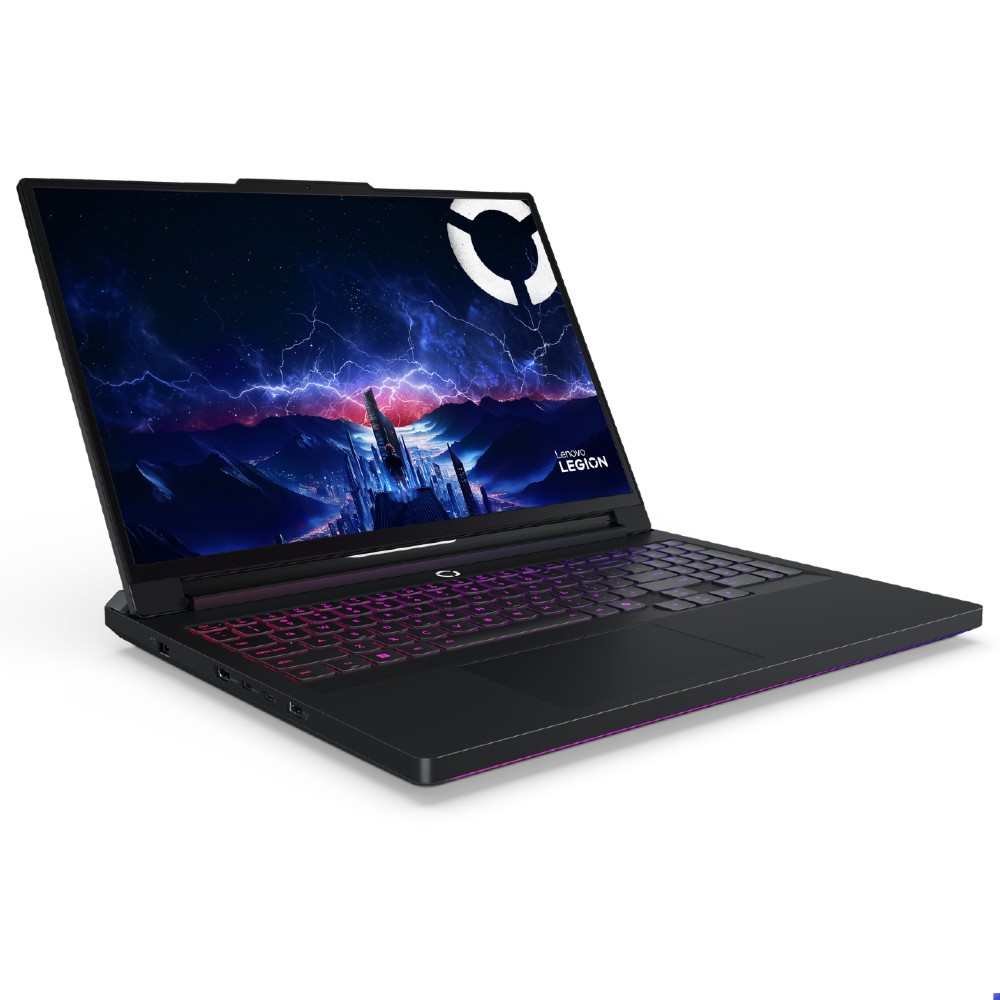
Lenovo went all-out with the new Legion Pro 7i, creating one of the best gaming laptops you'll be able to buy this year. It's consistently powerful, the display is absolutely fantastic, and that aluminum chassis might survive the apocalypse. Just prepare to pay a lot for this big boi.

Zachary Boddy (They / Them) is a Staff Writer for Windows Central, primarily focused on covering the latest news in tech and gaming, the best Xbox and PC games, and the most interesting Windows and Xbox hardware. They have been gaming and writing for most of their life starting with the original Xbox, and started out as a freelancer for Windows Central and its sister sites in 2019. Now a full-fledged Staff Writer, Zachary has expanded from only writing about all things Minecraft to covering practically everything on which Windows Central is an expert, especially when it comes to Microsoft.
You must confirm your public display name before commenting
Please logout and then login again, you will then be prompted to enter your display name.
